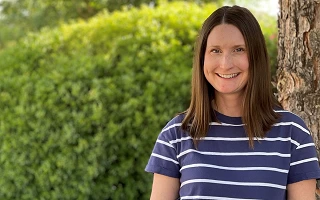“People always wonder why people stay in abusive relationships,” said Sheryl Christianson, senior programs manager of My Sisters' Place, a Catholic Charities domestic violence shelter. “When we start the conversation with ‘why do they stay,’ we place additional burden on the victim. We need to wonder why do people abuse, and what can be done to hold them accountable.”
In 2013, 125 people were killed in domestic violence related homicides in Arizona.
“People always wonder why people stay in abusive relationships,” said Sheryl Christianson, senior programs manager of My Sisters' Place, a Catholic Charities domestic violence shelter. She believes to understand a victim's reasoning in an abusive relationship, a person should first understand what goes through the mind of an abuser.
“When we start the conversation with ‘why do they stay,’ we place additional burden on the victim,” said Christianson. “We need to ask...why do people abuse and what can be done to hold them accountable?”
Christianson confesses there isn’t an easy answer. “It’s complicated, but it boils down to power and control.”
Inside an Abuser's Mind
An abuser doesn't think about relationships like most healthy people do. Abusers often feel they share an identity with their victim.
They do not want their victim to have a life separate from them and see the victim as an extension of themselves. They will use isolation or threats to keep their victim from leaving, getting help or having any other relationships.
Anything that empowers their victim, including relationships or money, will be seen as a threat to the abuser who wants the victim completely dependent.
“Even the perception that the person is trying to leave the relationship can cause the abuser to take desperate measures,” said Christianson.
Abusers may blame their violent behavior on the victim, drugs, alcohol, anger or other factors, some even claim their behavior is motivated by love or protection. Ruby stayed in a dangerous relationship thinking things would get better if her husband got sober. She eventually escaped.
Learned Behavior
Some experts believe violence is a learned behavior. “Some people grow up with violence and learn to emulate it. Others grow up and seek healthy relationships, renouncing the violence they grew up with,” said Christianson. “Growing up in a violent household doesn’t mean a person will be violent themselves. Many people grow up and say, ‘I will never behave that way.’”
Abusers intermix loving behaviors with degrading, controlling and threatening behaviors. This often creates confusion in the victim, with the victim doing lot of second guessing of herself. An abuser tries to make his victim mistrust her own perceptions of reality and her ability to trust others. It's often a very complicated head game convuluted with "acts of love." An abuser's end goal is to have his victim subjugated to his power and control.
As abusers spend more time with their victims, the victim's self-esteem, confidence and relationships start to crumble, making it even more difficult for the a victim to leave the relationship. Often people don't understand the complexity of an abuser/victim relationship, but it's not usually based on one specific act of violence - instead, it's a long, confusing, dehabilitating relationship that many struggle to escape.
Catholic Charities is committed to helping men, women and children in escaping domestic violence. We have operated a domestic violence shelter since 1985. If you know of anyone who needs help, please call our 24-hour hotline at 480-821-1024. If you'd like to help domestic violence victims, when you partner with us you will provide them with food, clothing, counseling and shelter to help them start a new life free of violence.








